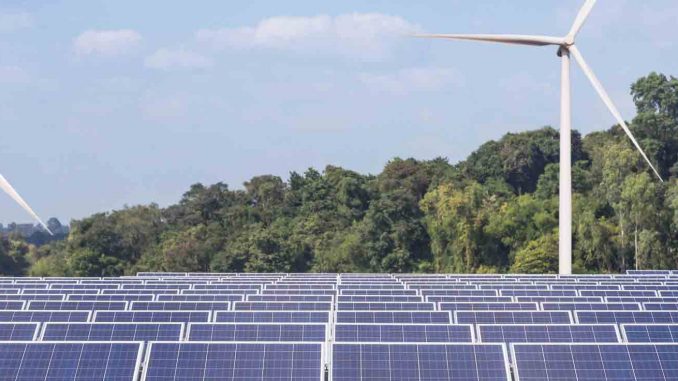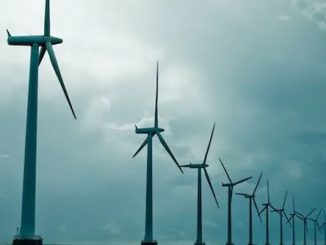
By Anukriti
On May 25, 2018, the Ministry of New and Renewable Energy (MNRE) issued the guidelines for setting up 2,500 MW of ISTS-connected wind-solar hybrid power projects under the National Wind-Solar Hybrid Policy. The guidelines provide a framework for promoting grid-connected wind-solar photovoltaic (PV) hybrid systems in order to ensure optimal utilisation of transmission infrastructure and land, reduce the variability in renewable power generation, and achieve better grid stability.
The MNRE has designated the Solar Energy Corporation of India (SECI) as the nodal agency for the implementation of this scheme. Following this, in June 2018, SECI released a request for proposal tender for setting up 2,500 MW of ISTS-connected wind-solar hybrid power projects (Tranche I). SECI asked bidders to submit both techno-commercial and financial bids together. This is the first large-scale wind-solar hybrid tender issued by SECI. Prior to this, it had invited expressions of interest from engineering, procurement and construction contractors to develop a 160 MW wind-solar hybrid project in Ramagiri district of Andhra Pradesh.
Tender specifications
The tender defines a wind-solar hybrid project as one in which the rated power capacity of one resource (either wind or solar) is at least 25 per cent of the rated capacity of the other. As per the tender guidelines, a developer can bid for a minimum total capacity of 200 MW and a maximum capacity of 500 MW, with at least 50 MW of capacity set up at each project site. SECI has set a tariff ceiling of Rs 2.93 per kWh for this tender. The hybrid project developers (HPDs) will set up the power plants on a build-own-operate (BOO) basis. While SECI will sign power purchase agreements (PPAs) for a period of 25 years, the tender has a provision for extending the duration beyond that, depending on SECI’s approval.
In addition to new projects, SECI has allowed projects that are under construction as well as those already commissioned but without any long-term PPA commitments to participate in this tender. SECI had earlier planned to announce hybrid tenders in two 2 GW tranches for projects that would be developed on existing wind and solar sites. However, the plan was cancelled as developing hybrid projects on existing sites would lead to challenges pertaining to the overhaul of existing transmission lines, existing long-term PPA commitments, evaluation of existing projects and sites, higher tariffs, etc.
The selected bidders for this tender can avail of fiscal incentives such as accelerated depreciation, concessional customs duties and tax holidays available for the projects as per the MNRE. They will have to submit a performance bank guarantee (PBG) of Rs 0.2 million per MW per project within 30 days of the letter of award (LoA) issuance.
The HPDs will be responsible for setting up the transmission network for interconnection at a voltage level of 220 kV or above at their own cost. In addition, they will be responsible for obtaining all approvals, permits and clearances required for setting up the project from the state government and local bodies. The HPDs will have to apply for connectivity at the identified substations within 30 days of the issuance of LoAs. They will also be required to comply with central and state regulations on forecasting, scheduling and deviation settlement. While submitting the bids, the bidders have to declare the annual capacity utilisation factor (CUF) of their proposed projects, which can be revised once within the first year of plant operation. However, the declared annual CUF must not be less than 40 per cent and the generation must be in the range of 90-120 per cent of the declared value. SECI will relax the lower CUF limit for events such as non-availability of grid for evacuation that are beyond the control of the HPD. The developers will have to pay a compensation for the undergeneration of electricity and curtail excess generation. SECI will purchase the excess power generated within the specified limits, at the PPA tariff.
As the 2022 deadline nears, the tendering agencies have become stricter in terms of enforcing commissioning timelines and levying penalties. SECI has mandated that the hybrid projects be fully commissioned within 18 months from the date of issuance of LoAs. In case of a delay of up to six months, the total PBG amount on a per day basis and proportionate to the capacity not commissioned will be charged as penalty. If the commissioning is delayed beyond this, the tariff will be reduced at the rate of Re 0.50 per kWh per day of delay for the uncommissioned capacity.
The maximum time period allowed for full project commissioning after levying penalties has been set at 27 months from the date of LoA. After this, the capacity considered in the PPA will be reduced to the commissioned capacity only and the rest will be terminated. However, if the HPD fails to commission a project capacity of 50 MW or 50 per cent of the allocated capacity within the 27-month period, then, apart from the imposition of penalties, it will be blacklisted from participating in any MNRE or SECI scheme.
SECI will approve early project commissioning depending on the availability of transmission connectivity and will purchase the power generated at the PPA tariff. However, in this case, no additional incentives will be given to the developers.
While India has been strictly following its tendering trajectory, issues such as inadequate transmission infrastructure have resulted in limited capacity addition. A case in point is SECI’s latest 2 GW wind tender, which was undersubscribed by about 800 MW. Since these problems remain unresolved, it is likely that this tender for wind-solar hybrid could see a similar response.
Meanwhile, the Ministry of Finance has recently approved the Directorate General of Trade Remedies’ recommendations to impose a 25 per cent safeguard duty on solar cell and module imports from China and Malaysia from July 30, 2018. This is likely to result in higher bid tariffs for SECI’s tender.
These concerns notwithstanding, SECI’s tender for wind-solar hybrid projects will open up a new area of renewable energy development, which may improve transmission capacity utilisation as well as cost and land optimisation.
India has only one commercially operational wind-solar hybrid power project (50 MW+28.8 MW), which is located in Karnataka. The current capacity is only a fraction of the 10 GW wind-solar hybrid target set by the government to be achieved by 2022. Through this tender, the MNRE hopes to replicate SECI’s success in tendering stand-alone wind and solar projects, which have received some of the lowest tariffs in the country. The outcome of this tender will play a major role in influencing state agencies to roll out similar tenders and effectively utilise the country’s resources for meeting its clean energy targets.



